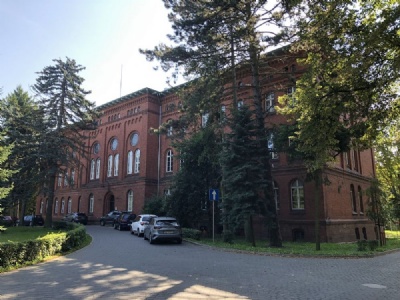Gniezno
Just over fourty kilometres northeast of Poznan lies Gniezno (german Dziekanka) and there is a mental hospital dating from the nineteenth century. According to Nazi racial ideology, mentally handicapped people did not deserve to exist. They were considered a threat to the Aryan ideal man and his welfare and would therefore be eradicated. In the wake of the German occupation of Poland in the autumn of 1939, a murder wave of mentally ill people systematically retrieved from the Polish mental hospitals followed.
In early December 1939, a special unit called Commando Lange arrived at the mental hospital in Gniezno. This was a commando led by Herbert Lange which had the task of murdering mentally ill people who were confined in mental hospitals in western parts of Poland incorporated into Germany. The patients who were to be killed were given a sedative syringe by a nurse. Then they were led into the cargo space of a truck. The cargo space was hermetically sealed and when its doors were closed the truck’s engine was started. The engine exhaust was then led into the hermetically sealed cargo via a hose and the patients inside died of carbon monoxide poisoning.
During two actions in December 1939 and January 1940, approximately 1050 people were killed this way. The bodies were buried in mass graves in a secluded forest at Nowaszyce, about twenty kilometres north of Gniezno. Between 1943 and 1944, a ward for children up to 14 years of age was established in the hospital. These were children who carried hereditary diseases and about 90 out of 140 children were murdered based on a racial motive.
In early December 1939, a special unit called Commando Lange arrived at the mental hospital in Gniezno. This was a commando led by Herbert Lange which had the task of murdering mentally ill people who were confined in mental hospitals in western parts of Poland incorporated into Germany. The patients who were to be killed were given a sedative syringe by a nurse. Then they were led into the cargo space of a truck. The cargo space was hermetically sealed and when its doors were closed the truck’s engine was started. The engine exhaust was then led into the hermetically sealed cargo via a hose and the patients inside died of carbon monoxide poisoning.
During two actions in December 1939 and January 1940, approximately 1050 people were killed this way. The bodies were buried in mass graves in a secluded forest at Nowaszyce, about twenty kilometres north of Gniezno. Between 1943 and 1944, a ward for children up to 14 years of age was established in the hospital. These were children who carried hereditary diseases and about 90 out of 140 children were murdered based on a racial motive.
Current status: Preserved eith monument (2021).
Location: 52°38'56.42"N 17°36'21.93"E (Nowaszyce).
Get there: Car.
Follow up in books: Friedlander, Henry: The Origins of Nazi Genocide – From euthanasia to the final solution (1995).







After the war, the previous psychiatric care was resumed and is still ongoing. At the hospital chapel, there is a memorial plaque on the facade in honor of the patients who were murdered. In the woods around Nowaszyce, there has been a memorial monument for the victims since 2010. It is really in the middle of nowhere and can be difficult to find if you do not know where to go on the small gravel roads that are available. Not all the mass graves in which the victims were buried have been found.